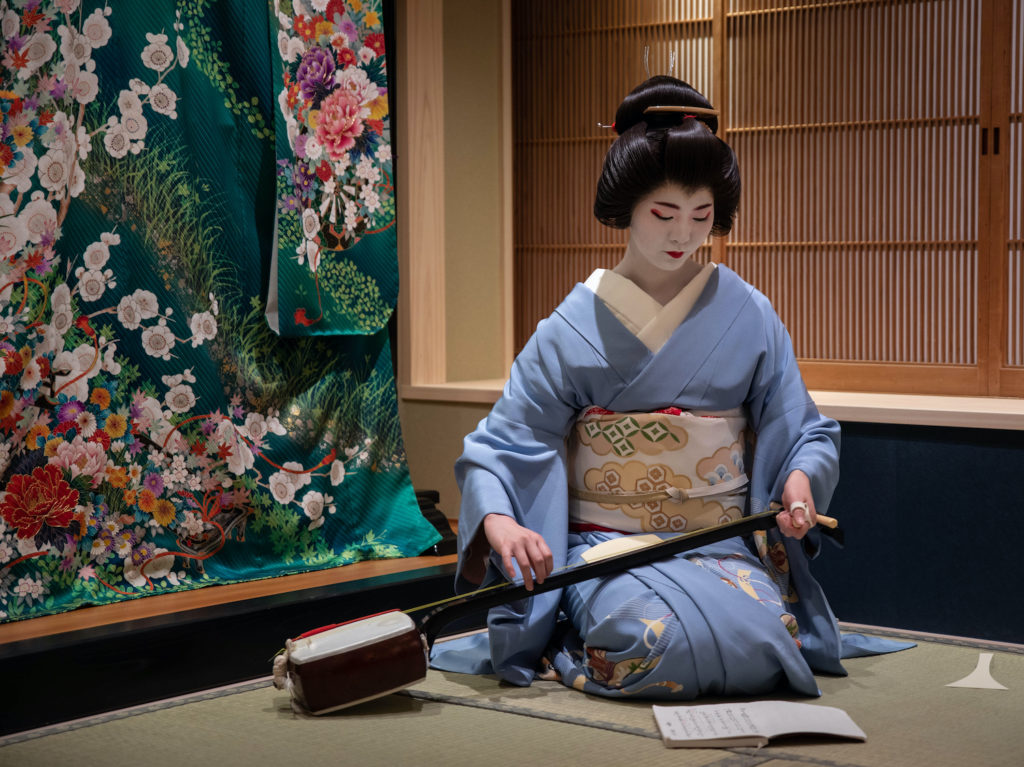
Geisha – Japanese traditional female entertainers boast its bright and gorgeous kimono which pleases our eyes. Their elegance comes from their behaviors, intelligence, and the poise as a result of the long year’s training. Let’s take a look at their history, impressive makeup, and gorgeous hairstyles!
- Brief History of Geisha
- What did/do Geishas do?
- Okiya Crest
- Makeup and Hairstyles
- The roles of Geishas today
1. Brief History of Geisha
It was near the turn of the 18th century that the first entertainers of the pleasure quarters, which first built in the 16th century, called geisha, appeared.
The first geisha were male, entertaining customers waiting to see the most popular and gifted courtesans (oiran).
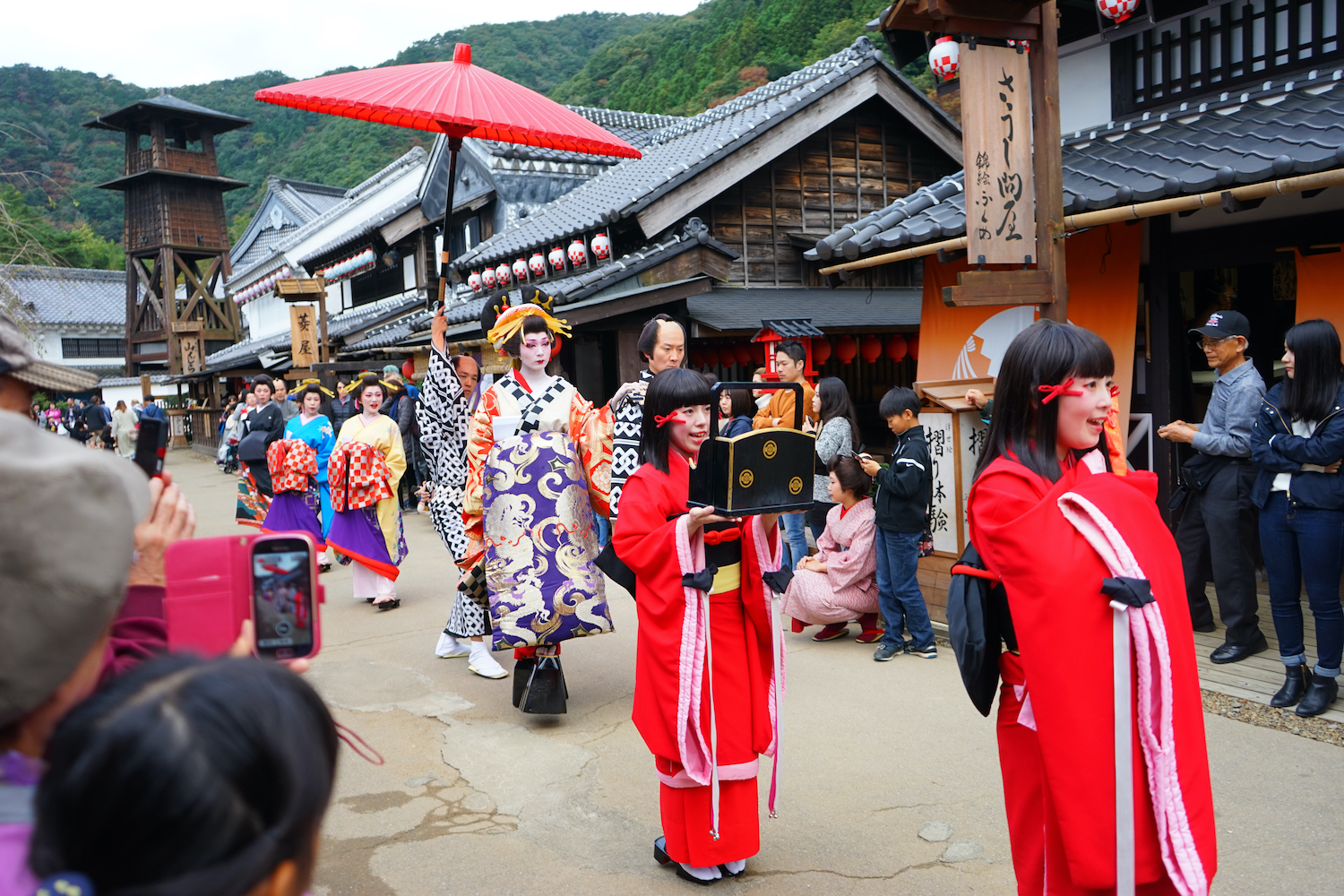
And the first woman who called herself a geisha was a prostitute named Kikuya.
Yet, a skillful shamisen (Japanese three-stringed musical instrument) player who became extremely popular in 1750, opened the door for followers not to be a prostitute but to be successful entertainers.
In Kyoto, however, the origin of Geiko is considered to be the waitress at the tea house. They began playing shamisen or dancing of Kabuki plays.
The term “geisha girls” who comforted American military men mislead the image of the geisha.
Unlike geisha girls, geisha are skilled artists who sing and dance, play games and talk to please customers.
Often confused with Maiko who are apprentice geisha, Geisha are the full-fledged entertainers who have done long years of training.
In Tokyo, Maiko are called Hangyoku which means that they were paid half of the wage of a full geisha.
Notice that Maiko and Geisha or Geiko can be used both singular and plural.
A woman above 21 years of age is considered too old to be a Maiko and becomes a full-fledged geisha upon her initiation into the Geisha community.
Note that Geisha and Maiko can be both singular and plural.


Geisha (Geiko) and Maiko
Their appearance changes throughout their career from the girlish, heavily made-up Maiko, to the sophisticated appearance of an older and established Geisha.
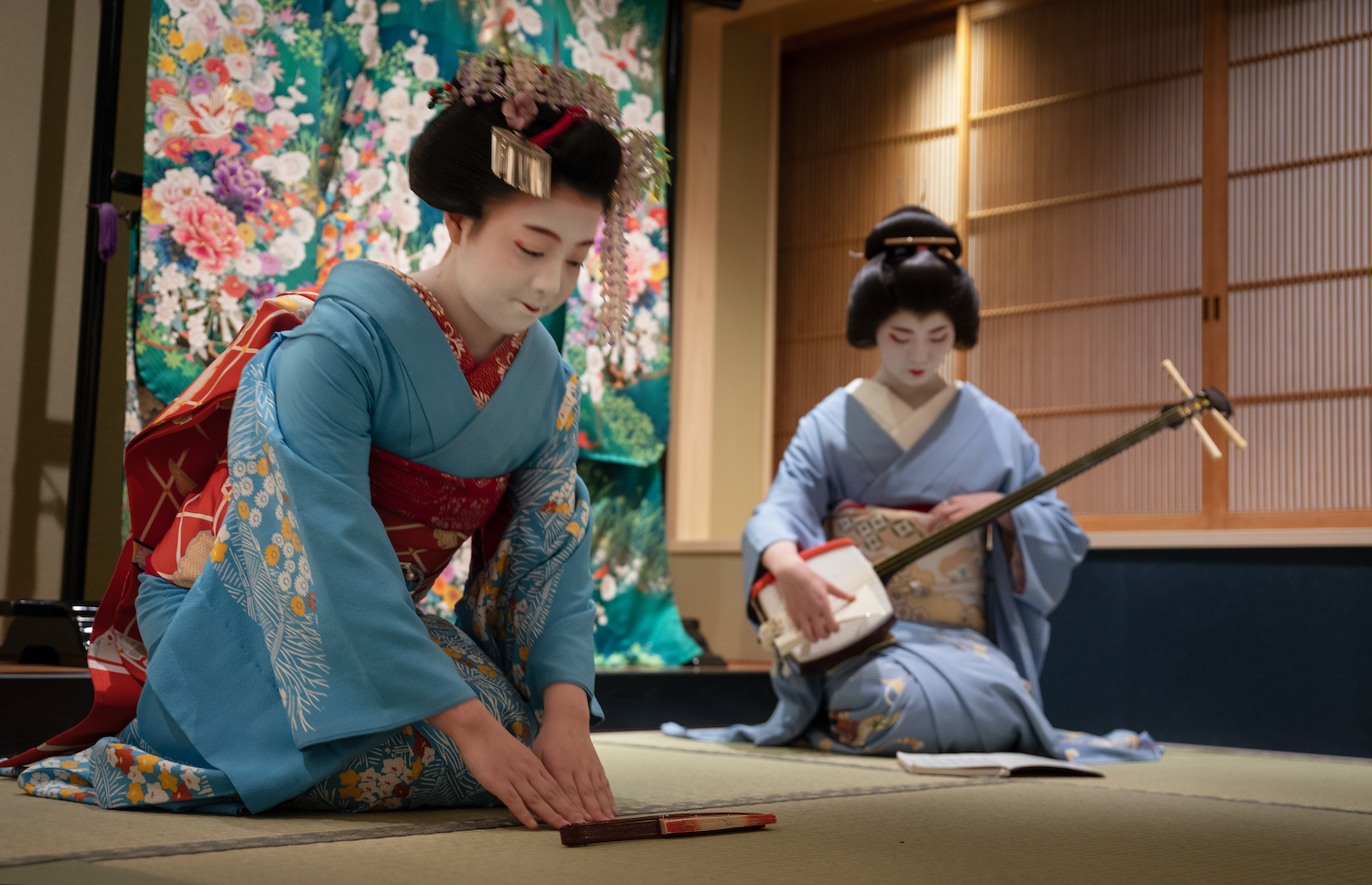
As they have those steps to be Geisha, they change their makeup, hairstyles, and kimono as well at each stage. We will take a look at these aspects later on makeup, hairstyles, and kimono.


2. What did/do Geishas do?
What geishas do is the same now and then. They go through a training period to be a geisha to be a professional entertainer.
The stages prior to becoming a Maiko, it’s called Shikomi. For around fifteen years old, girls begin to live with seniors to learn how to dance, behave, wear a kimono and they can be Maiko about a year later.
Now Maiko spends her coming five years to learn and practice dancing, playing shamisen, singing. They learn the art of communication in banquet rooms with tatami flooring.
They are not allowed to do chores which involve using water, clean, or laundry in order to keep their hands clean and beautiful.
The last step to be a Geisha (Geiko in Kyoto), they have a ritual of “Eri-kae”. It literally means changing a collar, from a vivid red collar to a white one is proof that they become a Geisha.
Aside from the training of musical instruments and dance, the crucial element to be learned is the social skill.
As Japanese society is structured on the arts of gracious etiquette, a maiko has to acquire the skills to navigate the complex social web of the Hanamachi (flower towns where Geisha live) to build the support network she needs to survive as a geisha.


Dance – Geisha
The dance of the geisha has evolved from the dance performed on the noh and kabuki theaters. The wild and outrageous dances transformed into a more subtle, stylized, and controlled form of dance.
It is extremely disciplined and every dance uses gestures to tell a story and only a connoisseur can understand the subdued symbolism.
For example, tiny hand gesture represents reading a love letter, holding the corner of a handkerchief in the mouth represents coquetry and the long sleeves of the elaborate kimono are often used to symbolize dabbing tears.
Once the geisha might be the profession a girl had no choice but to work on no matter what under the unfavorable circumstance.
Although, it was the sure way to support herself without becoming a wife of someone while the majority of women were wives.


Their spirit and pride show in the way they behave and it gives them substance as they are professional business women.
As they are professional, they keep studying traditional instruments: the shamisen, shakuhachi, and drums, as well as learning games, traditional songs, calligraphy, Japanese traditional dances, tea ceremony, literature, and poetry.
Geisha may gracefully flirt with their guests, but they will always remain in control of the hospitality.
Over their years of apprenticeship, they learn to adapt to different situations and personalities, mastering the art of the conversation and hospitality. This is why people respect genuine geishas.
Okiya Crest – Geisha
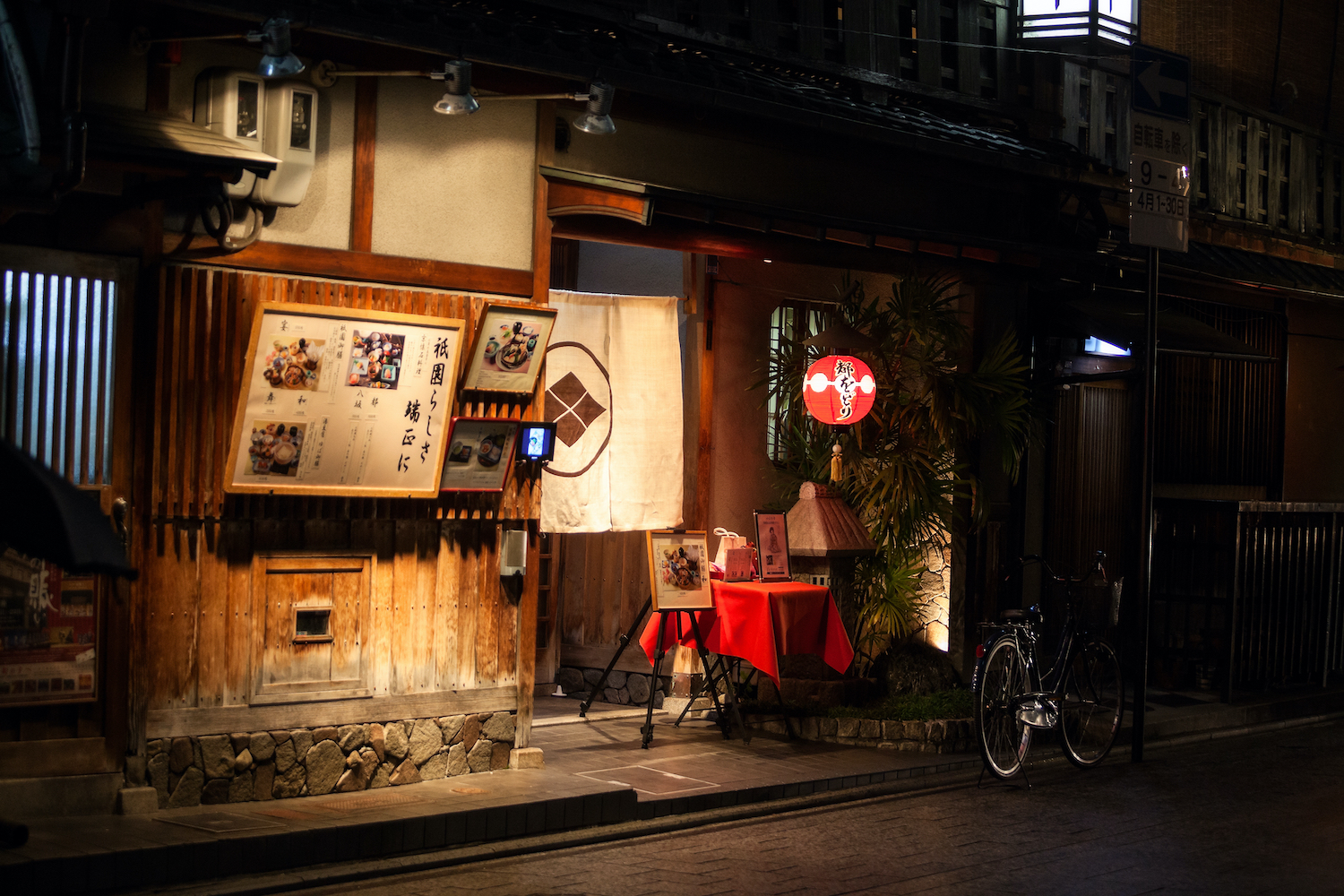
There is a woven Kamon (crest) of each Okiya (geisha house) at the bottom of the obi (broad sash for kimono) of a Maiko, which is kind of a name tag.
Japanese Family Crest: List of the Lineage Symbols
In the past, girls who began to train to be a Geisha from very early like under ten, they had a chance to get lost in town and people would recognize which Okiya she belongs to by the Kamon.
Also, when they attended a banquet room watching senior Maiko do their job. It’s not uncommon that they tend to sleep at a party and male attendants bring them back to the Okiya they belong judging from their kamon.
Karyukai (The World of Flower and Willow) – Geisha
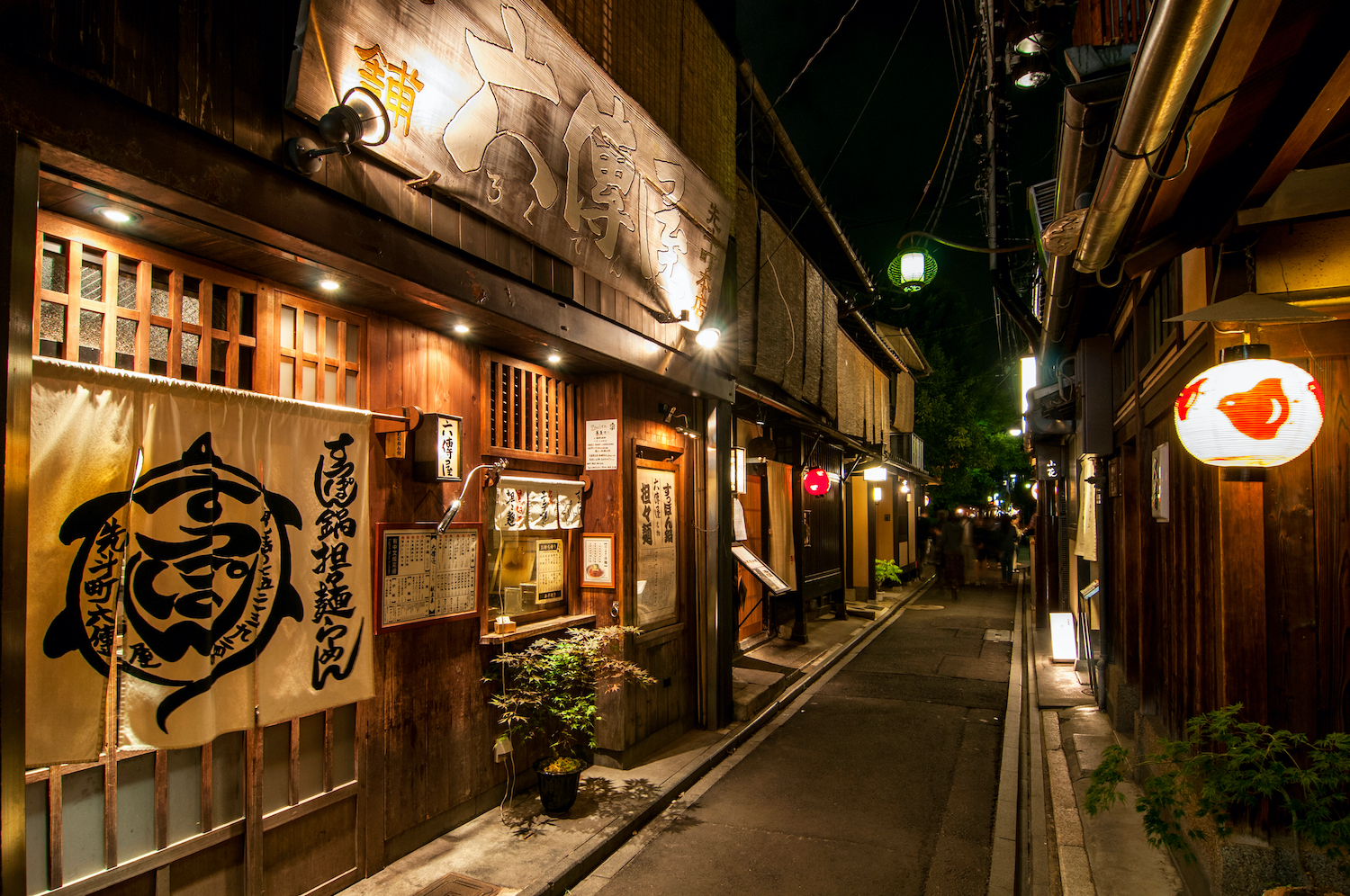
It is still said that geisha inhabit a separate reality which they call the Karyukai which is made up of the flower and the willow.
The courtesans were said to be the colorful flowers while the geisha were taken as willow which possess subtlety, strength, and grace.
Makeup and Hairstyles – Geisha
On the development of girl’s career, even a detail such as the length of one’s eyebrows is significant. Short eyebrows are for the young and long ones displayed maturity.
The application of makeup is hard to perfect and is time-consuming. Makeup is applied before dressing to avoid dirtying the kimono.
Their stunning white face and neck are made with the paste of white powder, water, and applied with a bamboo brush starting from the neck and working upwards.
The significant patterns we see on the back of their neck forming a W or V shape where un-whitened areas left on the nape, to accentuate this traditionally erotic area in Japanese sexuality.
Their impressive eyes are traditionally applied with charcoal, but today, modern cosmetics are used. The eyebrows and edges of the eyes are colored black and a maiko also applies red around her eyes.
Lips, a geisha puts red lipstick on both of them while a maiko applies only on the lower lip to make her look innocent. Newly full-fledged geisha will color in only the top lip fully.
Either way, the bottom lip in a curved stripe that does not follow the shape of the natural lip. The round bottom lips create the illusion of a flower bud.
After a maiko has been working for three years, she changes her makeup to a more subdued style. The reason for this is that she has now become mature, and the simpler style shows her own natural beauty.
For formal occasions, the mature geisha will still apply white makeup.
Hairstyles
As her status changes so do her hairstyles. Different hairstyles and hairpins signify different stages of a girl’s development.
Japanese hairpins, each has its meaning. The Ume plum hairpin is worn in February, cherry blossom one in April, and the chrysanthemum one in October corresponding to each season.
You would see an ear of rice one on rare occasions such as a New Year or the opening ceremony of Hanamachi (flower towns).
These hairstyles are decorated with elaborate hair combs and hairpins (kanzashi).
Despite the large and conspicuous hair combs were popular, smaller and less conspicuous ones became more popular following the Meiji Restoration period and into the modern era.
Japanese Patterns and Designs: Dynamic Interpretation of Nature
A full-fledged geisha uses a wig, but a Maiko does her hairstyles with her own hair and spend hours each week at the hairdresser and sleep on holed-pillows to preserve the elaborate styling.
Momo-ware
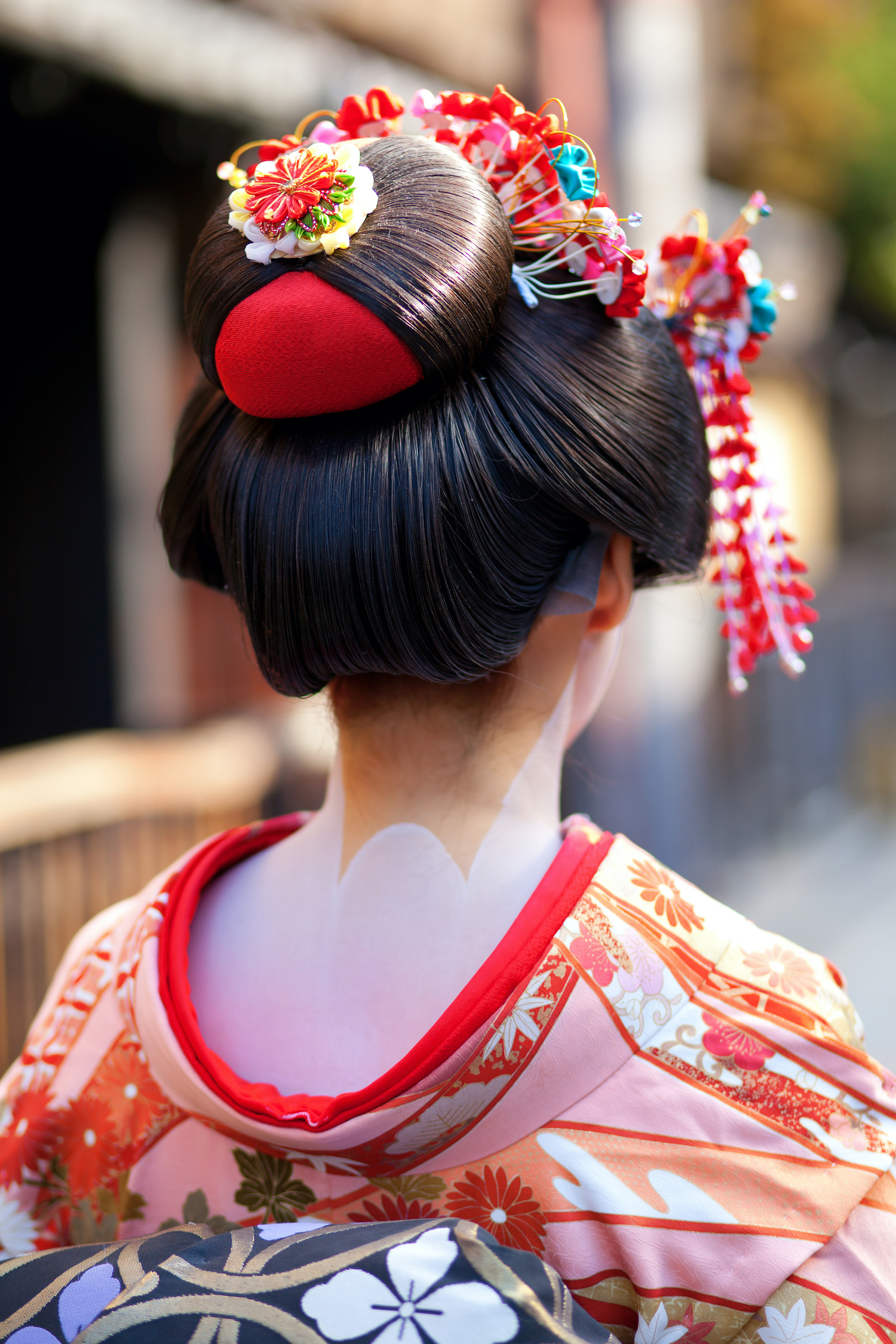
The Momo-ware hairstyle was pretty popular among girls in town in the late era of the Edo to the Showa period.
The design looks like a peach and the lower part slightly opened showing the cloth-made hair accessory, hence the name Momo-ware (peach cracked open).
Ware-shinobu
Ware-Shinobu is a gorgeous and lovely hairstyle a Maiko who have a year or two years experience of after the debut.
The looks pretty similar to Momo-ware. The elaborate hair pins are used, some are given by customers, some are given from seniors.
Ofuku
Ofuku is the hairstyle girls used to do. In the early stage, it was popular among the young apprentice who worked in the inner palace as a maid.
Its popularity spread among girls in town as well, improved gorgeously and a Maiko can have this hairstyle when they are accepted as a mature Maiko.
You can tell if she’s a new Maiko or a matured one by looking at the color used on the cloth made of crep, which sticks to a lower part of the topknot. Fresh Maiko uses red, then the pink and lighter tone of color.
Katsuyama
Only senior Maiko who usually wear Ofuku can have this hairstyle, Katsuyama only when the Gion festival is being held. A fringed pink hairpin called “Bonten” looks gorgeous like a princess.
The Gion festival begins on July 1st and lasts until July 24.
Originally, the Katsuyama hairstyle derives from a prostitute whose name was Katsuyama who did her updo as women of a samurai family developed.
The color of the hair accessory red, pink, sky blue to pale purple indicates the stages of one’s career.
Yakko-shimada
Yakko-shimada is seen only on the occasion of greetings in January and August in black kimono with crests as a formal dress.
One or two months prior to becoming a Geiko, they have this hairstyle, Yakko-shimada.
Sakkou
Sakkou is the hairstyle which was popular among young wives in the west part of Japan in the late Edo period. In the Geisha world, a maiko who is becoming a geiko in a week or so have this hairstyle to greet clients, customers for Eri-kae (the stage a maiko becomes a geiko).
This is the last hairstyle which is decorated with one’s own hair. In some Hanamachi, the ceremony of cutting off one’s topknot is held for a Maiko on the last day of being Maiko in a banquet room.
Shimada-mage
This kind of chignon hairstyle called “Shimada” was developed back in the 17th century among the most established geisha at the time.
Becoming a full-fledged geisha, they no longer do their hairstyle with their own hair but put a wig on.
Kimono – Geisha
Maiko and young Geiko wear Sodehiki which is a long kimono with having the edge of it with a left hand is their custom. It makes it difficult for men to access their breasts, which indicates “We sell the art, but not ourselves.” They are skilled dancers, singers, and communicators but not prostitutes.
You can tell a Geisha from a Maiko quite easily for the obi (broad sash for kimono), Maiko wears a quite long obi hanging down from her back and its color is brighter.
The colors, patterns, and style of kimono are dependent on the season and the event the geisha and the maiko is attending. A kimono can take from two to three years to complete, due to painting and embroidering.
Chiyogami Crafts: History, Paper Dolls, and Bookmarks
Regarding the footwear, a Maiko wears a special wooden sandal called Oboko heights about four inches while a Geiko wears Geta, raised wooden sandals. They wear only tabi (white split-toed socks) indoors.
The Roles of Geishas today
Geishas of the Edo period differed greatly from those of today. Although they shared the same role of adding color to the banquet with their artistic performances, many of them were poor and had to sell themselves to okiya (geisha houses).
Nowadays, since they need to choose topics according to the clientele, they gather information from their daily lives. Additionally, they have many opportunities to entertain overseas guests, so improving their language skills is also becoming a part of our training.
In recent years, along with entertaining guests at banquets, geishas are increasingly being invited as a lecturer at various events as an inheritor of Japanese culture.
The lectures cover a variety of topics, such as kimono dressing, etiquette, and the basics of the arts, and sometimes include overseas business trips.
Some geisha are active as tourism ambassadors, promoting Japan and Kyoto. While being bearers of traditional culture, they are also expanding their activities to provide learning and awareness to people living in today’s society.
References
舞妓・芸妓 (日本文化いろは事典)
芸者の化粧の謎を解く (www.nagaitoshiya.com)


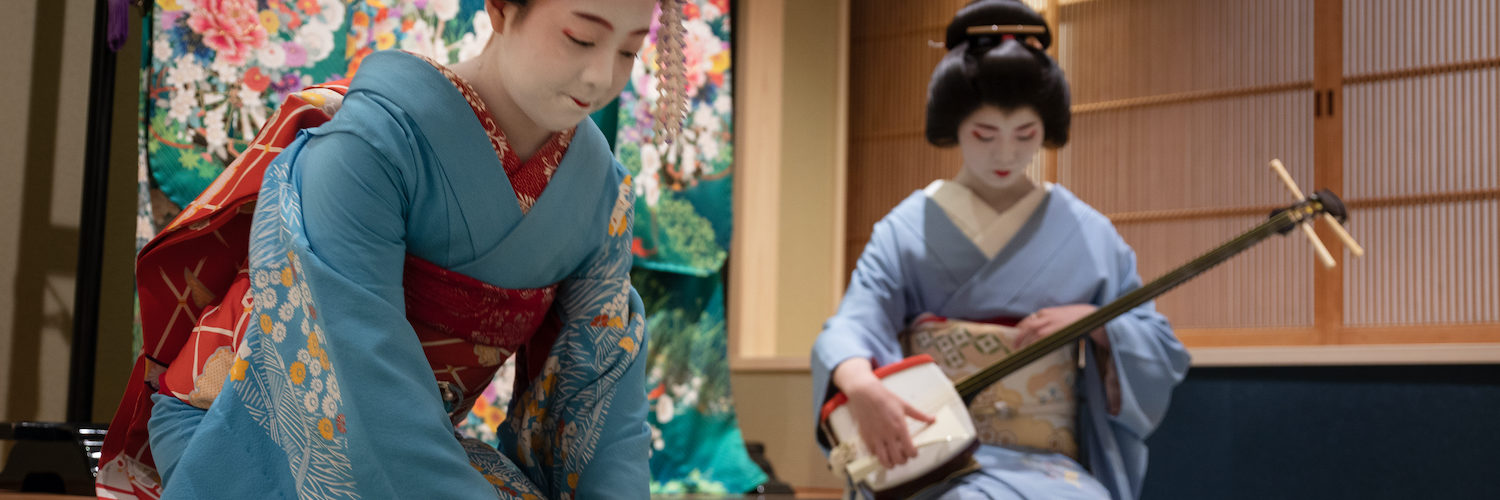
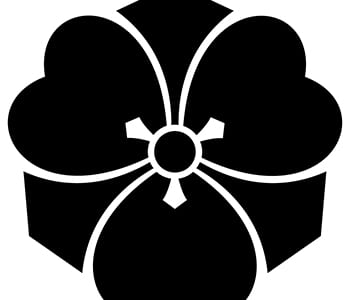
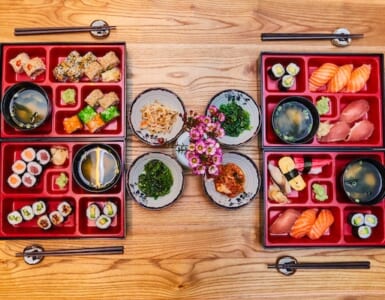
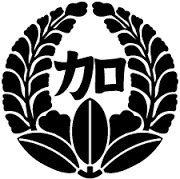


Add comment